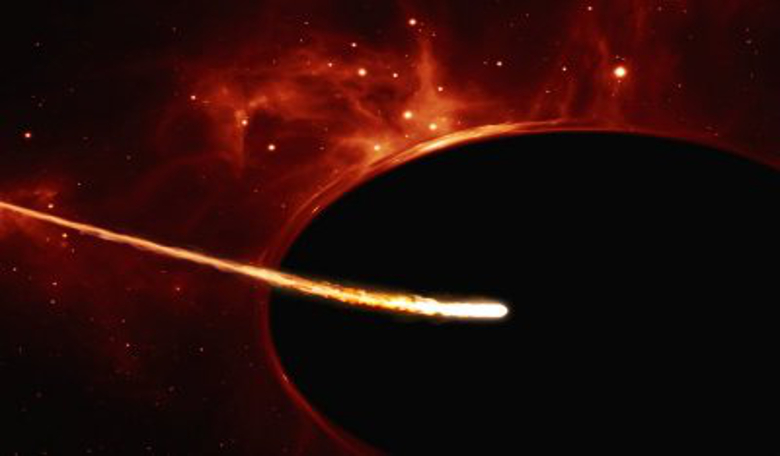Using data from the the Chandra Deep Field-South (CDF-S) image, scientists have found a new type of fast, high-energy outburst unlike any detected before.
In the past few decades, scientists have found a multitude of high energy outbursts or flashes of radiation known as transient events, such as gamma-ray bursts, that can generally be attributed to accretion processes onto objects such as neutron stars, black holes and white dwarfs. Nonetheless there are still a number of emerging classes of exotic X-ray transients whose nature and driving mechanisms remain unclear or unknown.
Now, researchers have potentially found another new type of transient using an image taken by the Chandra X-ray Observatory satellite, which allows astronomers to ‘see through’ material such as the gas clouds that populate the Milky Way, in order to look at how the Universe appears in X-ray radiation.
The team, whose lead author on the research paper is Franz E. Bauer from the Instituto de Astrofísica in Santiago, Chile, specify that the unique multi-wavelength properties of this transient event, known as CDF-S XT1 – which includes emission from visible light – could perhaps be a type of outburst already known to astronomers but seen from a different electromagnetic perspective or that it represents a completely new class of X-ray transient. Given that it appears to be distinct from other types of high-energy transients currently known, the team are leaning towards the latter explanation.
Equally perplexing is where it originated from. The team put forward that CDF-S XT1 could be an “orphan” X-ray afterglow from an off-axis short-duration Gamma-ray Burst (GRB), or a highly beamed Tidal Disruption Event (TDE). TDE’s occur when when a star passes so close to a black hole that it experiences tidal forces which exceed its self-gravity and essentially the star is ripped apart. To account for the properties of CDF-S XT1, the team state that the star in question, if it was a TDE, would have to be a white dwarf being shredded by an intermediate-mass black hole.
Either way, say the team, none of these scenarios can completely explain all of the observed properties of CDF-S XT1. However while the estimated rate of such transients remains modest say the team, it’s unusual nature means sources like CDF-S XT1, could possibly be used in future high-energy and/or gravitational wave (GW) searches.
For more on this research see; here











